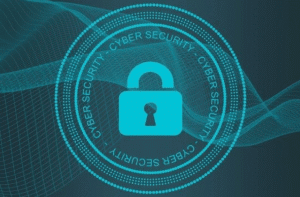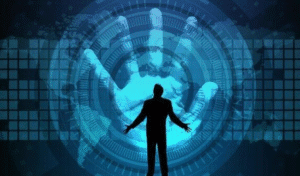How Technology Is Transforming C3PAO Assessment Process
Defense contractors are under increasing deadline pressure to become CMMC compliant, as the DoD moves forward with its cybersecurity mandate. The good news: With the finalization of CMMC 2.0, organizations can now begin Level 2 assessments via Certified Third-Party Assessment Organizations (C3PAOs).
But for any contractor looking to secure new or ongoing defense contracts, it is best to start preparing early. Historically, C3PAO assessments have been paper-based and required a lot of manual documentation, weeks-long on-site visits and months-long validation periods that often lagged certification by many months.
Not only was this method resource-consuming, but it also delayed compliance. Today, technology is streamlining the process. Digital tools and automated systems now support assessors and contractors, cutting out middlemen from the path toward certification and ongoing cybersecurity readiness.
In this blog post, we explore how technology is changing the C3PAO assessment process and what this means for organizations planning their path toward CMMC certification.
The Stakes and the Scale
CMMC is not optional anymore. Today, all DoD contracts have clauses that require certification compliance. If you’re new to CMMC, handling Controlled Unclassified Information (CUI), or Federal Contract Information (FCI), you must be prepared for a formal compliance audit.
Traditional audits rely on document review, interviews, and manual evidence gathering. This does not scale when assessing dozens or hundreds of companies in short time windows. The complexity is growing, from cloud architecture, remote work, zero-trust model, supply chain integration, etc. And so will the failure gap of manual assessment.
An authorized C3PAO can fill this failure gap. Tools can help speed up evidence gathering, provide continuous monitoring capability, and assist C3PAOs in consistently conducting their assessments.
What Roles Technology Plays Today?
To understand how transformation occurs, let’s deconstruct the assessment lifecycle and identify where technology comes into play.
1. Scoping & Pre-Assessment Tools
Before assessments begin, a C3PAO has to define the scope, which includes what systems, networks, cloud services, or third parties are included. Technology tools help:
- Automated Asset Discovery: Agents or network scans identify in-scope systems—workstations, servers, cloud resources.
- Configuration Baseline Scoring: Tools compare current settings with the known good configurations (e.g., NIST SP 800-171 Rev. 3 controls).
- Gap Analysis Dashboards: Contractors/assessors can view what controls are missing, what to focus on, and remediation progress through an interactive dashboard. No guesswork or scope creep, assessors show up knowing where the issues are
2. Evidence Collection & Automation
One of the toughest parts in CMMC assessment is to collect evidence, i.e., logs, access records, policy documents, system configurations, change records, etc. Technology can automate all this to avoid any manual uploads.
- Secure Evidence Portals: Contractors upload or link logs, documents, and system snapshots via centralized portals. The assessors can view them in one place.
- API Integrations: Some tools connect directly to EDR, SIEM, identity platforms, cloud configuration systems, and pull needed logs or settings automatically.
- Timestamped Snapshots and Version Control: When revised, the system automatically versions a policy. Assessors view the exact policy in place at any given time.
This eliminates human lapses, ensures nothing is missed, and expedites the review cycle.
3. Interview Support & Virtual Assessment Tools
In-person audit-appraisals relied heavily on interviews, observation, and inspection of artefacts and physical evidence. Technology has made the following available today:
- Virtual Toolkits with Guided Checklists: A C3PAO can initiate an assessment remotely through a guided workflow that automatically directs staff to perform an action or provide an artifact.
- Remote Screen Sharing and Live Walk-throughs: The program’s assessors can view activities or configurations remotely via a technology-based, remote-control interface to facilitate secure screen-sharing.
These features support hybrid or fully remote assessments, particularly useful for geographical constraints or large device footprint scenarios when an on-site pure evaluation is impossible.
4. Automated Scoring Engines & Rule Engines
Once data is entered into the system, the assessor evaluates each control for compliance. Technology can assist with this through:
- Scoring Engines: Software produces a pass/fail or pass/fail/conditional assessment result based on embedded rules (e.g., per CMMC practice).
- Decision Logic Built on the CAP (CMMC Assessment Process): Tools use official logic to make the same rating decisions for all assessments.
- Exception Workflows: If something doesn’t meet full, the tools flag it, generate a Plan of Action & Milestones (POA&M), and submit to remediation.
This accelerates conclusions about whether an organisation is fully compliant.
5. Continuous Monitoring & Post-Assessment Validation
Assessors no longer need to rely on static point-in-time evidence alone; technology allows for:
- Continuous Telemetry Ingestion: Alerts and logs keep flowing into monitoring to sense deviations after certification.
- Drift Detection: Assessed alerts go off if the configuration drifts away from the state.
- Periodic Revalidation Snapshots: Software can auto-capture system states at scheduled intervals or on demand, offering evidence for recertification.
This means that assessments don’t stop when you give a report. They move to the right under continuous validation.
6. Workflow, Reporting & Audit Trail Platforms
Tools that C3PAOs use:
- Track Tasks End to End: Everyone involved in the assessment can see what must be done, from scoping to report writing.
- Produce standard assessment reports using templates and automation of formatting, control result inclusion, and cross-references.
- Maintain audit logs for every action to guarantee chain-of-custody integrity.
These not only help maintain consistency across multiple assessments and provide the ability to scale operationally, but also put rubber to the road should you ever be challenged.

Why Technology is Essential for C3PAOs and Contractors
Technology is no longer an option in CMMC assessments; it’s a key enabler. The right technology can mean the difference between an arduous inspection and one that’s streamlined and predictable for assessors and organizations preparing for certification.
1. Speed, Cost Efficiency, and Precision
Manual, paper-intensive processes driven by repeated requests for information (RFIs), clarifications, and large volumes of evidence generate friction and delays.
But when automation replaces the need for RFIs or additional LOE related to evidence collection, validation, and scoring, assessors can spend fewer hours on site each assessment—and less time doing the same work. This means lower-cost assessments and faster certification.
In addition, assessments’ technical platforms and infrastructure are designed to align with the logic and workflow. Passing all evidence through the same validation rules and scoring engine reduces variance among different assessment teams and prevents subjectivity from entering the process.
2. Visibility and Trust
Contractors’ top complaint is a lack of visibility around the audit: “What is missing? Where do we stand?” A good assessment platform will provide real-time dashboards of gaps, remediation progress, and audit status before the final report. This clarity helps to eliminate surprises, supports better decision-making for planning purposes, and builds trust in the process.
Beyond that, continuous monitoring and drift detection help assessors and contractors catch issues early before they morph into audit findings. The system becomes more of a living mechanism than a one-time snapshot.
3. Scaling Up for Volume and Complexity
With CMMC being required on more DoD contracts, there will be a need for C3PAOs to perform multiple assessments concurrently. The only way that is possible, at any scale, is with technology. Workflow engines, portals, and role-based access can enable assessors to manage dozens of clients without needing 10x the staff.
Integration with cloud platforms, identity systems, and logging stacks allows you to scale across many environments without adding overhead for each assessment.

Some Risks to Watch Out For
The opportunity is enormous, but managing technology in assessment workflows requires caution:
- Data protection is nonnegotiable. Tech assessment systems collect deep technical evidence such as configurations, logs, and architecture diagrams. Any breaches or leaks would be catastrophic. Strong encryption, compartmentalization, and access controls must be built into every layer.
- Tool credibility matters. A C3PAO can’t just assume a tool is functioning; it must show how it performs data capture, processing, and protection. Assessors must keep records of tool configuration, version, and data retention in accordance with the CMMC requirements.
- Not all systems cooperate. Legacy, proprietary, or obscure systems may not have APIs or exposed logs. However, manual processes will still be required. The assessment tools need to accommodate this and avoid being a roadblock.
Best Practices to Follow When Relying on Technology
- Avoid vendor lock-in. A C3PAO or contractor should not be beholden to a particular platform incompatible with new environments. Ensure the technology is modular and can work with multiple cloud providers, on-premises technologies, and identity platforms.
- Stay current with the rules. CMMC, CAP (CMMC Assessment Process), and control definitions change, and if your automation is not up to date, it works against you, not for you.
While scoring engines and automated portals ease the workload, the ultimate judgment is always with the assessor. C3PAOs should utilize technology to streamline repetitive tasks and leverage human intelligence to analyze edge cases and contextual situations.
What Tech Innovation Looks Like Going Forward
Emerging technologies are positioned to make C3PAO assessments faster, more accurate, and overall valuable to organizations working to achieve CMMC compliance.
Blockchain technology could create immutable audit trails of evidence and assessment results, generating records of evidence-related activities that cannot be changed or challenged. This will provide greater confidence in the integrity and transparency of an assessment.
Internet of Things (IoT) integration could automatically use sensors to monitor physical security controls and environmental conditions. IoT sensors could verify that physical access controls are active and that facility security measures are persistently maintained.
Advanced automation can be applied to the routine parts of an assessment, freeing humans to perform more complex analysis and concentrate on developing strategic recommendations.

Conclusion
Technology replaces C3PAO audits/paperwork with faster, more consistent, and scalable processes. For CMMC, you get easier and more predictable certification, retain the release friction to operate reasonably, and evolve IT.
If you are a defense contractor prepping for a CMMC assessment, this is an opportunity, not a threat. And when it comes time to choose a C3PAO, you want one that has already adopted the right technologies that guarantee both safety and compliance.

Recent Comments